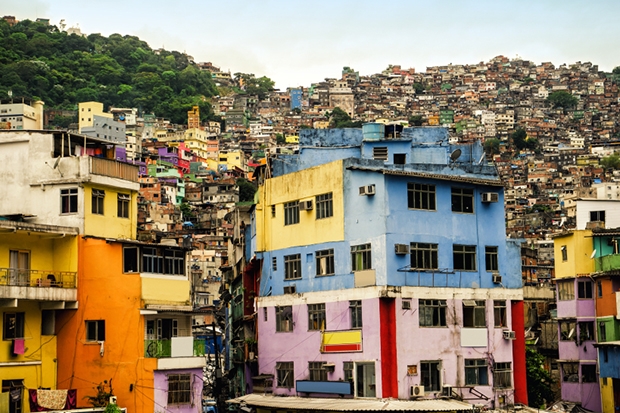When Stefan Zweig first arrived in Rio de Janeiro in 1936, he was overwhelmed not only by the city’s magnificent landscape but also by its ordered architecture and city planning. This encounter he would later describe as being ‘one of the most powerful impressions of my whole life’. In his Brazil: Land of the Future, a book that was an exercise in wish-fulfilment masquerading as travelogue, Zweig believed the country to be the embodiment of ‘future civilisation and peace in our world’.
Over 70 years later Brazil held the world’s worst record for homicidal violence: for every ten people killed, one was a Brazilian. Rio, the cidade maravilhosa (marvellous city), may have retained its beauty in spite of being hemmed in by favelas, but it was now damned.
In Nemesis, Misha Glenny, an award-wining investigative journalist and expert on organised crime, has turned his attention to the drugs, violence and poverty that thrive in Rocinha, Rio’s most infamous favela. Rocinha, a ‘maze of veins and capillaries that feed the complex body of this dense settlement’, is no ordinary ghetto; it has mushroomed next to the city’s smartest districts, attracting tourists looking for an authentic ‘third-world’ experience. Rather than attempt a comprehensive study of this labyrinthine world, Glenny has wisely chosen the charismatic drugs lord Antônio Francisco Bonfim Lopes, known by his sobriquet ‘Nem of Rocinha’, through whom to tell this terrible yet fascinating history.
The rise and fall of Nem of Rocinha is a case of life imitating art. Antônio, an intelligent and upstanding manager on a modest salary, finds that he doesn’t have the means to pay for his daughter’s medical treatment (she suffers from an uncommon disease, Langerhans cell histiocytosis) and borrows the 20,000 reals from Rocinha’s resident Don, Lulu.








Comments
Join the debate for just £1 a month
Be part of the conversation with other Spectator readers by getting your first three months for £3.
UNLOCK ACCESS Just £1 a monthAlready a subscriber? Log in